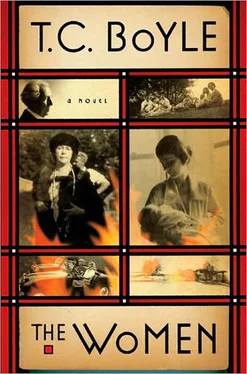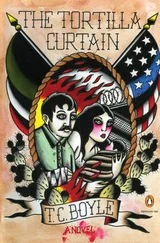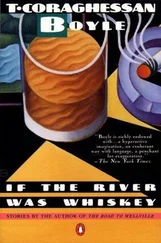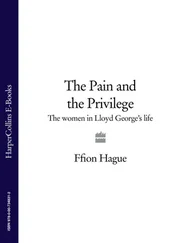106
Ultimately, Miriam would be tapped in this regard, contributing several thousand dollars of her own money to the reconstruction effort, a fact to which Mr. Fake would one day be intimately attuned.
107
Mildly put. As I’ve indicated, Wrieto-San’s temper was a force all its own, incendiary, savage, excoriating, and all the worse for the caustic bite of his tongue.
108
At that time a young architect by the name of Russell Williamson. I have no record of his remuneration, but I suspect he worked for his bed and supper alone, prototype of the apprentices to come.
109
Then still living in Chicago prior to her husband’s retirement from the stock exchange and their move to a more equitable climate on the West Coast. Cf. page 285.
110
The Mann Act, passed into law just five years earlier as a means of prosecuting pimps, panders, fancy men and macquereau who transported women across state lines for the purpose of prostitution, would haunt Wrieto-San, as has been seen. Its intention was to combat the very real abuses of “white slavery,” in which young immigrant girls were approached with offers of employment (in many cases as they stepped off the boat from Ellis Island), only to find themselves opiated, locked away in a room and gang-raped, starved and brutalized till all sense of dignity and individuality was destroyed, after which they were sold into prostitution. Mrs. Breen must have been among the first to attempt to use the law as a tool of harassment and intimidation.
111
A strange adumbration of what lay in the future. One can only speculate as to the extent this experience may have influenced Miriam’s decision to report Olgivanna to the immigration authorities some ten years later on the same pretext.
112
Wrieto-San had been blessed with acute eyesight. However, according to his autobiography, he felt himself rapidly aging in the wake of the tragedy of August 1914 and acquired eyeglasses. I rarely saw him wear them, and never in public, a matter of personal vanity with him.
113
Despite his lifelong protestations to the contrary, I can’t imagine but that Wrieto-San for the most part welcomed publicity, as it got his name out before the public and fed his sense of self-importance. So too with Miriam. Perhaps — and this occurs to me just now — they chose each other in a flare of mutual flamboyance, each reflecting all the brighter off the other.
114
Surname and provenance unknown. Perhaps he was the lover to whom Miriam would refer darkly when speaking of her “tragic love,” perhaps even the very one she accosted with a drawn knife. See page 86n.
115
O’Flaherty-San may be thinking here of The Wild Pampas (Boston: Lippincott, 1915) by H. (Harriet) R. R. Fleck, one of Miriam’s favorite novelists.
116
We can’t know for certain, but it seems likely that he was then working on the plans for his revolutionary “American System Ready-Cut” standardized houses — what today would be called, in classic American shorthandese, pre-fab.
117
Public sympathy turned against her at this juncture, and Wrieto-San was able to take the high road in declining to prosecute her for misappropriation of the mails. Still, the damage to his reputation was done and he was once again seen as philandering and venal, if not faintly ridiculous.
118
Kosode, that is. Lightweight summer robes. Wrieto-San collected textiles as well as prints, screens, sculpture and pottery. Anything of the Far East seemed to hold a special fascination for him, most particularly, as has been seen, the art of Japan. Do I flatter myself to say that our folk art is the equal of any nation’s?
119
Aisaku Hayashi had been sent by the Ōkura investment group (and the Emperor, who was providing sixty percent of the funding) to make a close study of Wrieto-San, whose reputation of working against the grain, not to mention providing regular scandals for the tabloids, bore examination before any contract for the new Imperial Hotel could be finalized.
120
A sign of beauty in my country. O’Flaherty-San’s wife, my granddaughter Noriko, has just such a dentition and a smile of rare and melting grace.
121
An unfair characterization, needless to say. My own late wife, Setsuko (née Takata), whom, sadly, O’Flaherty-San never met, was the very soul of the perfect mate, highly accomplished as a violinist, graphic designer and homemaker, graceful, intelligent, beautiful, my partner and equal in every endeavor. I shall miss her through all my days with an ache as deep and wide as the gulf that separates this life from the next.
122
A crude gaijin notion that is beneath contempt, nothing more nor less than an attempt to belittle and dehumanize our people, a process that began with Commodore Perry and continues to this day. Would Miriam have stooped so low as to promulgate it? Sadly, in the derangement of her anger, I am afraid so. Which excuses nothing. (An editor wants to strike it, but we shall let it stand for the sake of realism. And O’Flaherty-San.)
123
1916.
124
In 1905. Wrieto-San credits this trip with awakening his lifelong love for all things Japanese.
125
Some two thousand concrete “fingers,” as he styled them.
126
It was demolished in 1968.
127
Wrieto-San was one of the foremost collectors in the world. As has been seen, he made use of his prints as a kind of currency, playing them off against his debts. He realized some $10,000 on the sale of prints just prior to leaving for Japan at the end of this year of 1917, and he was rapidly investing these monies in acquiring a far grander and more extensive collection than anyone in the United States had heretofore seen.
128
Arata Endo is, of course, the illustrious Japanese architect who went on to design the Minamisawa building of Jiyu Gakuen and the Koshien Hotel, among other prominent buildings. He became Wrieto-San’s good friend and close associate and was invaluable as a liaison between Wrieto-San — who did tend to be somewhat imperious, to say the least — and the investors’ group. Without him, I doubt very much that Wrieto-San, for all his charisma, would have survived the thousand misunderstandings and cost overruns the construction ultimately entailed.
129
That would be Aline Barnsdall. Her residence, as any architectural buff will know, would come to be called Hollyhock House, after the flowers that grew on the hillside.
130
In all, they made five trips to Japan between 1917 and 1922, staying for a total of thirty-four months. Sadly, the fifth trip marked the last time Wrieto-San would ever again set foot on our soil.
131
Again, the ironies of Wrieto-San’s life and attachments seem strangely cosmic, almost surreal, this Olga prefiguring the Olga who would become Miriam’s bête noire some five years later.
132
Literally, “Please, do you have room, sleep, bath?”
133
Wrieto-San’s mother was eighty-one when she came to Tokyo, where she was revered by everyone who came into contact with her. In Japan, unlike America, we honor the old for the passage of their years and the diachronic luxury of their thoughts. They are living artifacts and they are people, not abandoned husks to be shunted off to the purgatory of nursing home and hospice.
134
In the summer of 1922. They left Japan in July and were at Taliesin by mid-August.
135
But did she want it, truly? As for Wrieto-San’s mother, her health fell off rapidly through that autumn and she died in a nursing home in the town of Oconomowoc, Wisconsin, in February of the following year, when Wrieto-San and Miriam were in Los Angeles. By all accounts, he did not return for the funeral.
Читать дальше












